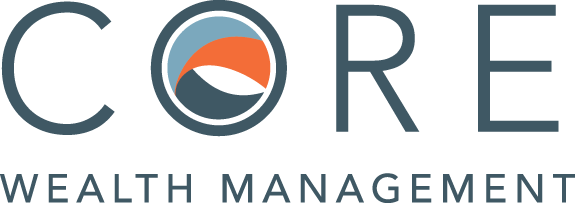 The annual change in the Consumer Price Index “CPI” exceeded more than 5% for the second month in a row, raising concern that we may be entering an inflationary period. How concerned should investors be?
The annual change in the Consumer Price Index “CPI” exceeded more than 5% for the second month in a row, raising concern that we may be entering an inflationary period. How concerned should investors be?
Before we get into that, we should begin with a short primer on what inflation is. Inflation refers to an overall rise in price levels or a fall in the purchasing power of a currency. Inflation is generally caused by too many dollars chasing too few goods and services.
It seems like many of the necessary ingredients for higher inflation are in place: record levels of government spending, record deficits, easy monetary policy, and uncertainty over economic growth.
But before we panic, here are a few things to keep in mind:
- First, the 5% inflation numbers of the past two months followed a 12-month period where there was no price increase. If we look at the trailing 24-months, the average annual inflation rate is approximately 2.5%, a reasonable number.
- Second, the market does not appear to be excessively worried about inflation. For example, since the onset of the pandemic, the yield on the 10-year Treasury has never risen above 2% (bond yields tend to be directly correlated with inflation rates). Furthermore, the “10-Year Breakeven Inflation Rate”, which represents a measure of expected inflation, is currently at 2.36%1.
- Third, we know that money supply growth does not always produce higher inflation, especially if newly created dollars do not circulate throughout the economy. We saw this phenomenon over the last decade with persistently low rates of inflation despite repeated rounds of quantitative easing.
- And finally, over the last several decades and across the developing world, massive increases in government spending have not been associated with high levels of inflation or high interest rates. In fact, it has gone in the other direction (e.g Japan, Europe), suggesting there may be an inverse relationship between government debt and inflation
Inflation is complicated and is difficult to predict with any certainty. But we do know that it is a risk that must be considered when formulating a financial plan and designing an investment portfolio. Below are some of the ways we manage inflation risk:
- Cash flow planning must incorporate inflation, as monetary policy is designed to produce a steady increase in the price level as a matter of course. Therefore, an inflation factor is perhaps the most important assumption in a financial plan. Even modest levels of inflation can produce a doubling of prices over the course of a retirement. In addition, flexibility, and the ability to adapt to higher-than-expected inflation is a crucial aspect of a financial plan.
- When selecting asset classes to utilize within a portfolio, the relationship between inflation and the expected performance of the potential investments must be considered. For example, unexpected inflation can destroy the value of long-term bonds, yet the return they offer is extremely modest; we therefore avoid them. On the other hand, we include Treasury Inflation-Protected Securities (TIPS) bonds which are specifically designed as a hedge against inflation. We also emphasize diversifying globally, because investing in companies located abroad (“international stocks”) can provide a diversification benefit in the event of high inflation in the United States.
- Every long-term portfolio must include an allocation to equities that have historically provided the best hedge against inflation. For example, as reported by Dimensional Fund Advisors, $1 invested in the S&P 500 Index from 1926–2017 would have grown to $533 worth of purchasing power by the end of 2017, after adjusting for inflation. Had that same dollar been held in “safe” one-month Treasury bills over the same period, it would have grown to an inflation-adjusted $1.51.
Furthermore, unlike bonds and cash, stocks can recover from unexpected inflation. After an initial shock, companies can adapt to price changes. As William J. Bernstein writes in his pamphlet Deep Risk: “…stocks, although suffering from inflation in the short term, protect against it in the long run.“ Therefore, investing in a diversified equity portfolio and staying invested, is perhaps the most important weapon against inflation.
As with all aspects of investing, we cannot predict what the future holds in terms of inflation. We know that the presence of certain indicators does not necessarily mean that a risk will present itself and even if it does, we will not know its precise impact. Therefore, we will continue to monitor the rate of inflation while focusing on the things we can control such as diversifying broadly, managing risk, and keeping costs and taxes low.

